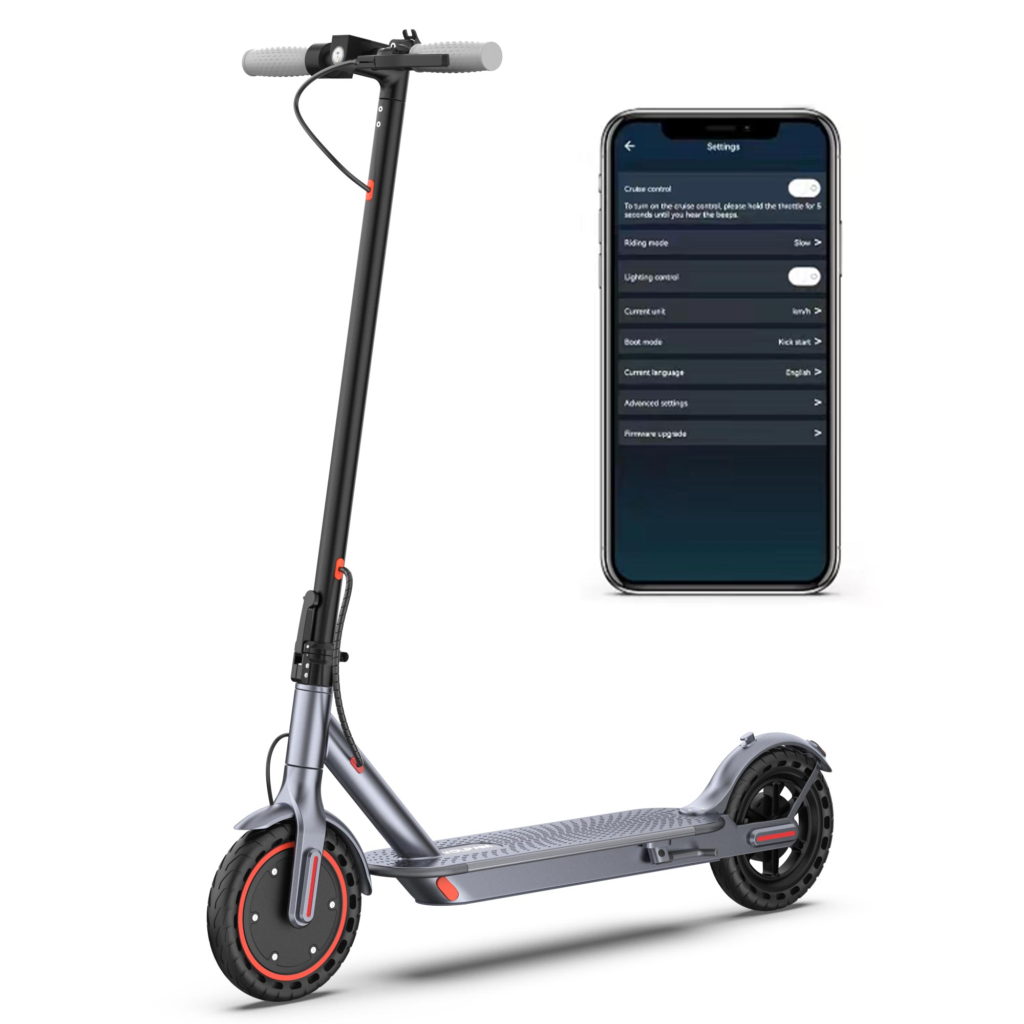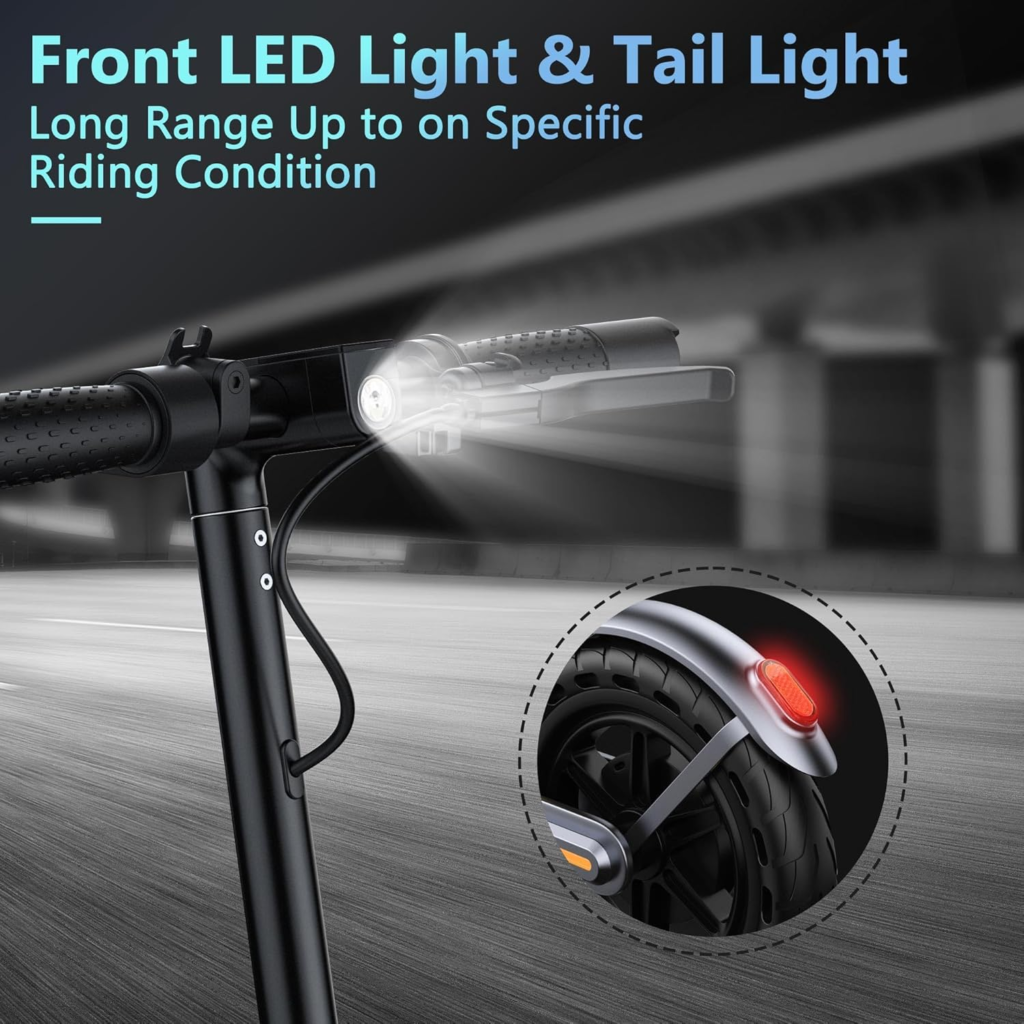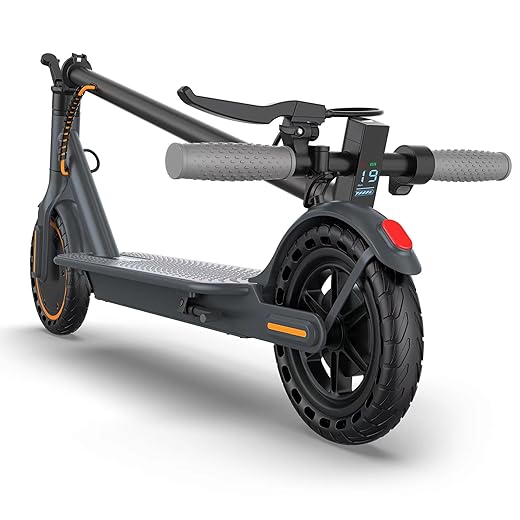Key Takeaways
- The VOLPAM SP03 is a lightweight city scooter ideal for short daily trips and urban commuting.
- It features a 350-watt motor, solid 8.5-inch tires, and a range of about 10-14 miles per charge.
- The scooter has a simple folding design, is easy to carry, and includes an app for lock and speed settings.
- While it offers a calm throttle and steady braking, the ride can be firm over rough surfaces and the deck is somewhat narrow.
- Overall, the VOLPAM SP03 Review highlights its practicality as a reliable commuter with some trade-offs.
The VOLPAM SP03 is a small, no-drama city scooter made for short daily trips. It keeps the weight low, uses a simple 350-watt motor, and rolls on 8.5-inch solid tires. This VOLPAM SP03 review sticks to real-street feel and clear facts, not hype. You can check the product page with full specifications here: VOLPAM SP03.
Key Specifications
| Block | Item | Detail |
|---|---|---|
| General | Brand / Model | VOLPAM SP03 |
| Intended use | Urban commuting, short trips, light errands | |
| Rider weight limit | 264 lb (120 kg) | |
| Water resistance | IP65 claim | |
| App | Tuya Smart (iOS/Android) | |
| Performance & Power | Motor | 350 W brushless hub (rear) |
| Top speed | 15.5 mph (25 km/h) default; up to ~19 mph (30 km/h) by region/app | |
| Hill claim | Up to ~20° stated; real-world city hills feel modest | |
| Drive modes | 3 speed modes (walk / standard / sport) | |
| Charging & Electrical | Battery pack | 36 V, 7.8 Ah, ~280 Wh |
| Charger | 42 V, 1.7–2 A barrel connector | |
| Charge time | About 4–5 hours from low | |
| Electronics | E-ABS, LCD display, basic BMS protections | |
| Build & Dimensions | Frame / fork | Aluminum alloy |
| Tires | 8.5-in honeycomb solid (puncture-proof) | |
| Weight | ~26.5 lb (12 kg) | |
| Unfolded footprint (L×W×H) | 42.1 × 16.9 × 43.3 in (1070 × 430 × 1100 mm) | |
| Folded dimensions (L×W×H) | 42.1 × 16.9 × 20.9 in (1070 × 430 × 530 mm) | |
| Safety & Control | Brakes | Front electronic (E-ABS) + rear drum |
| Lights & signals | Front LED headlight; rear tail/brake light; bell | |
| Display | Speed, mode, battery level, fault icons | |
| Features & Extras | Cruise Control | Yes, after steady throttle for ~10 s |
| App features | Lock, speed limit, unit switch, fault check | |
| Folding | Quick stem latch; one-hand carry is doable | |
| Warranty & Compliance | Safety compliance | UL 2272 claim for electrical system |
| Warranty | 12-month or 180-day by component |
Design & Build Quality
Let’s start simple. The SP03 looks clean, with a straight stem and a low deck. That low deck makes starts easy, and it keeps the center of gravity calm at neighborhood speeds. You step on, roll, and settle in without much thought.
The frame uses aluminum with a matte finish. It hides light scuffs and wipes down fast, so daily care stays easy. The fold latch clicks with a clear sound, then the bar hooks in place. You fold it in a couple of seconds, and it feels natural after a day or two.
Deck size is modest. You get enough length for a shoulder-width stance, but width is tight, so one foot sits a bit angled. Grip tape is grippy, even with damp soles. Up top, the LCD is basic and readable in sun if you tilt it a touch. You see speed, mode, and battery bars. No fluff, which fits the scooter’s vibe.
At about 26.5 pounds, it’s a light carry. You grab the stem near the clamp, tuck the deck against your leg, and head up short stairs. The latch stays shut during carry. That said, keep a hand near the fender on twisty stairwells. The bar doesn’t swing much, but it’s still a scooter, not a suitcase.
Overall, the fit matches the price. Cables tuck in well, panels line up, and the rear drum housing looks tidy. The hinge stays quiet when new. You may feel a little stem flex on broken pavement. It’s not scary, just a hint that this frame saves weight and cost rather than chasing max stiffness.

Motor, Power & Acceleration
The 350-watt rear hub sets a chill tone. Starts are smooth and predictable, not snappy. Throttle ramps in a friendly way, so new riders won’t get surprised by a sudden surge. In sport mode it climbs to the mid-teens on flat ground, then eases at the cap.
So what about hills? On mild grades around 4–5% it keeps pace with the bike lane. On longer 7–8% grades it slows into the low teens or high single digits near the top. You’ll want a little rolling speed before steeper driveways. Long climbs pull energy fast, and the motor warms, which is normal at this power.
Control at walking speeds is easy. Tiny throttle moves give tiny changes, so weaving through a crowded path feels calm. Kick-to-start helps, too. You give a light push, the controller wakes up, and the scooter glides out without drama.
Noise is low. You hear a soft electric whirr and a little tire hiss. The rear hub also avoids the slight steering tug that some front hubs show under power. New riders will like that, since the bar stays neutral when you roll on.
Battery, Range & Efficiency
The battery is 36 V, 7.8 Ah. That’s roughly 280 Wh, which suits short daily loops. A full charge from low takes about four to five hours. So you can plug it in after breakfast and roll out after lunch if needed.
Range depends on speed, weight, wind, and route. On flat city paths, most riders will see around 10–14 miles per charge at mixed speeds. If you cruise closer to 12–14 mph on warm days, you may creep into the mid-teens. The high claims ask for slower riding and friendly weather. Hills, cold, and headwinds shave miles, so leave a small buffer.
The gauge uses five bars. It’s not a precision meter, but it gets the job done. As the pack gets low, power softens a bit. That taper helps you nurse the last mile home instead of stopping short. If you’re down to one bar, slow a touch and play it safe.
Charging is painless. The 42-volt brick uses a standard barrel plug under a rubber cap. Seat it fully, watch the LED on the brick, and give it space to breathe while it warms. Simple routine, no fuss.
Ride Quality, Handling & Comfort
Solid honeycomb tires change the game. You won’t get flats, and you won’t carry a patch kit. That’s a big win for daily riders. The trade-off is feel. They run firm, so you feel joints and cracks. Bend your knees and keep your elbows soft. That stance turns sharp taps into small bumps.
On smooth lanes the scooter tracks straight and easy at 10–15 mph. The low deck helps with calm cornering. On rough brick and patched asphalt you’ll notice more chatter. Grip in the dry is stable, and the tread blocks hold lines well. In the wet, ease your inputs and give yourself a little more room.
Top speed on flat ground feels steady. There’s a trace of stem flex at speed over rough patches, yet no scary wobble on clean asphalt. A small lean starts turns quickly, so U-turns in a two-lane street are simple.
The deck has enough length for one foot forward and one across. On longer rides, swap feet now and then to relax your calves. Soft-soled shoes help a lot on rigid decks with solid tires. Little tweaks like that go a long way.
Braking & Safety Features
Braking blends a front electronic cut with a rear drum. Pull the lever and the E-ABS adds drag at the motor while the cable tightens on the drum. The lever starts light and firms up as the drum bites. It feels consistent, which is what you want in town.
Hard stops from bike-lane speeds stay straight. Keep your weight centered, hold the bar, and squeeze a bit harder as you slow. You’ll hear a soft scrub from the rear. On slick paint you might feel a faint pulse from the electronic assist. That’s normal. In rain, add space and smooth out your inputs.
Lights do their job. The headlight paints a short, bright patch in front, mostly for being seen and for slow paths at night. The tail light brightens when you brake, which helps drivers judge your speed. A small bell sits under your thumb. Use it early, then ring again if city noise eats the first ding.
Portability & Daily Usability
Storage is easy. Folded length is just over forty-two inches, and height drops to about twenty-one. It slides under a long desk or across a trunk. Hall closets and narrow entryways are fine as long as you clear the bars.
Carry balance is decent. Grab near the clamp and let the deck rest against your leg on stairs. For short lobby walks you can roll it by the stem with one wheel down. Make sure the latch is seated so it doesn’t rattle.
The display is readable outside. Buttons click cleanly, and the mode switch is obvious. The kickstand snaps out and holds the scooter steady in mild wind. The rear fender feels sturdy for light handling, though you shouldn’t rest a foot on it while riding.
Upkeep is light. You won’t pump tires. You won’t fix tubes. Wipe the deck and headset, and check the drum cable monthly. A half-turn on the adjuster usually tightens early stretch. Quick, simple, done.

Features, App & Extras
The Tuya Smart app adds a lock, speed limit settings, unit toggles, and simple fault checks. Pairing takes a minute the first time. Once set, the app helps you lock the throttle, which deters casual tampering. It’s not a replacement for a real lock, so still secure the scooter in public.
Cruise Control kicks in after about ten seconds at a steady speed. You hear a beep, see the icon, and that’s it. Tap the brake or roll the throttle down to exit. Use it on smooth, open paths. Skip it in traffic.
The on-board screen keeps the view tidy. Large speed digits, a mode letter, and battery bars. Not fancy, but quick to read, which matters more than a busy UI when you only glance for a second.
Charging Experience & Maintenance
Plug the brick into the wall, then the barrel plug into the scooter. The LED shifts when full. The charger gets warm, so set it on a hard surface with a little air around it. That’s the whole drill.
Build a simple routine. Top up after rides that take you below half. Try not to store the scooter at 0% or at a rock-solid 100% for weeks. If you’ll park it, aim for mid charge. Those small habits keep the pack happier over time.
For general care, focus on three things. Keep the folding latch clean and tight. Keep grit out of the drum cable and tweak slack as the shoes bed in. Check the main fasteners monthly. A small multi-tool in the drawer covers almost everything here.
Solid tires last for ages on clean paths. Over years, they can harden and feel sharper over bumps. If that day comes, you can swap them at home, though it takes patience. Most riders won’t need that for a long time.
Who the VOLPAM SP03 Is For
This scooter fits short, flat routes in town. Think school runs, quick commutes, and errand loops under six miles round-trip. New riders will like the gentle throttle and light carry. Folks who hate flats will love the tires.
Heavier riders still fit within the rated load. Hills just slow things down more, and headwinds nibble at speed. Plan flatter streets when you can. Keep the pace a bit lower on rough pavement to keep the ride calm.
If you want pillow-soft comfort on broken asphalt, you’ll want air tires or suspension. If you want to push higher speeds or climb longer hills, you’ll want a stronger motor. The SP03 makes sense when you keep it in its lane. Want a different take in the same family? See VOLPAM Q1.
Value for Money & Verdict (VOLPAM SP03 review)
You get an easy starter scooter with a tidy fold and no-flat tires. Day-to-day use is simple. The app lock is handy, and the brake setup feels predictable in town. Storage is easy at home and at work.
Trade-offs are clear. The ride is firm, the motor is modest, and the deck is on the narrow side. Hills and wind slow it down, and rough patches buzz your feet. So match the scooter to a flat route and steady cruising speeds.
Bottom line, the SP03 is a low-stress commuter for short city loops. Treat it like a practical errand buddy rather than a sport toy. Do that, and it slips into your routine without much thought. That’s the point.

Pros & Cons
Pros
- Light, compact, and easy to carry
- Solid tires kill flat anxiety
- Calm throttle makes it beginner-friendly
- Rear drum plus E-ABS feels steady
- Quick fold with a clear latch click
- App lock and simple settings in Tuya Smart
- IP65 claim adds weather confidence
- Charge time fits a workday
Cons
- Firm ride over cracks and joints
- Modest hill performance from a 350 W hub
- Narrow deck limits stance options
- A bit of stem flex on rough patches
- Battery size suits short commutes
- Drum cable needs occasional tweaks
- Battery bars aren’t a precise percent
- No suspension in the frame
Price
FAQs
How fast does the SP03 go on flat ground?
On flat paths in sport mode, expect mid-teens mph in steady cruise. It creeps to the cap, then holds there.
How far can it travel per charge in real use?
Plan on about 10–14 miles at mixed speeds on flat routes. Warm weather and gentler speeds stretch that.
Can I ride it in light rain?
It carries an IP65 claim, and the lights help with visibility. Slow down a bit and skip deep puddles.
What type of brakes does it use?
A front electronic assist and a rear drum. The lever feel starts light and firms up as the drum bites.
How does it handle hills?
It climbs short, mild grades fine. On longer or steeper hills it slows into the low teens or single digits.
Why read this VOLPAM SP03 review?
It focuses on real-street feel and clear numbers, so you can decide fast if it fits your route.
Does the app add value?
Yes. The lock feature helps in quick stops, and you can tweak speed limits and units without digging through menus.



